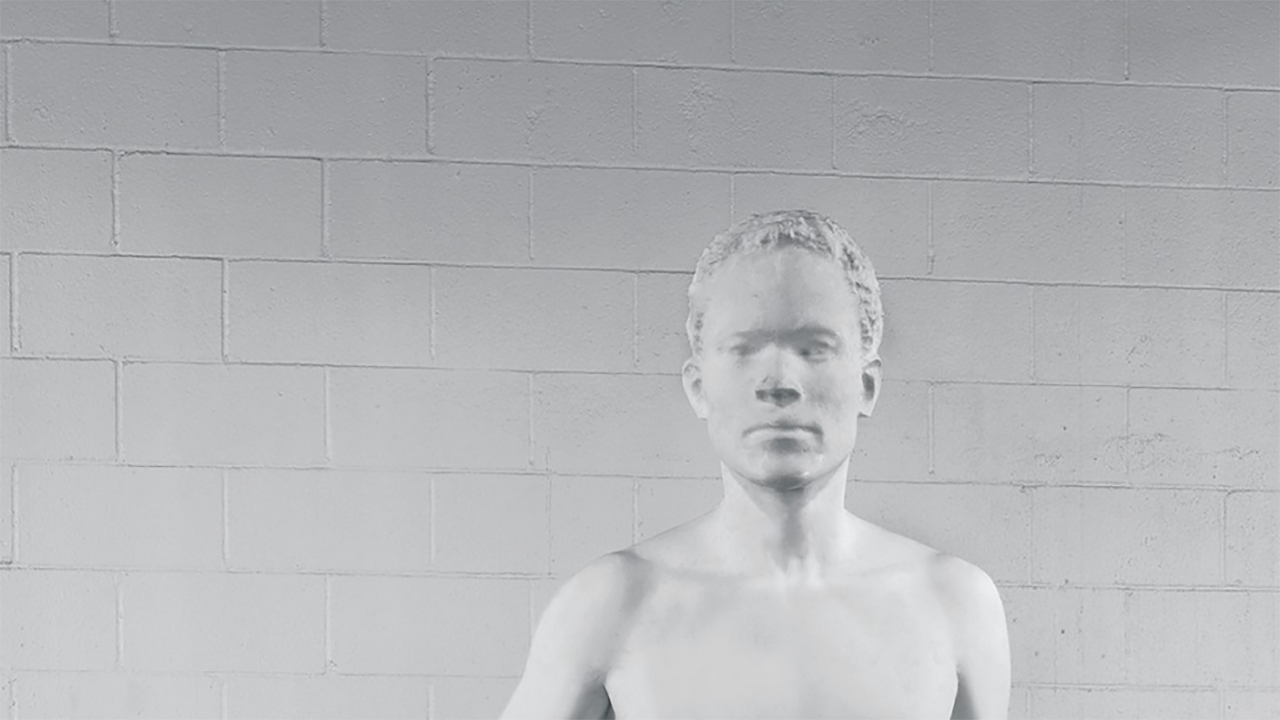The New Yorker’s May 11th issue includes a profile of the sculptor Charles Ray, tracking his life and career and peculiarities. One small section of the piece is devoted to the controversy around his piece “Huck and Jim,” a sculpture of the characters from Mark Twain’s The Adventures of Huckleberry Finn. The sculpture depicts a 9-foot-tall Jim, a grown-man runaway slave, standing protectively next to Huck, a fourteen year-old-boy, as the boy bends over in a scooping position. They are both naked, as they are in the novel, and Jim’s penis is large and unavoidable. Ray began “Huck and Jim” in 2009 when the Whitney asked him to propose a sculpture to go in a public plaza in front of their then-planned, now-newly-opened building downtown. Ray felt that the characters would be a great fit for a museum of American art, as he believes Huck Finn is a definitive piece of American art.
The Whitney’s director and chief curator were initially supportive of the work, but became leery as time went on. They worried that the image of a naked black man together with a naked white boy, no matter how innocent or historical, would be offensive to passersby, who wouldn’t necessarily know or care about the context. The Whitney’s director, Adam Weinberg, told Ray that the sculpture could go anywhere on the Whitney’s property except the plaza, but Ray was unwilling to compromise on the location. So the Whitney passed on the sculpture, which now sits semi-finished and homeless in Charles Ray’s studio in Santa Monica.
 Photo: Charles Ray and Matthew Marks Gallery
Photo: Charles Ray and Matthew Marks Gallery
Nobody comes out of this anecdote looking great. The Whitney looks cowardly for committing to and then backing out on a potentially polemic artwork, and Ray looks stubborn and out-of-touch and trollish for proposing a sculpture of a giant naked black man and small naked white boy for a public space and then refusing to compromise when that idea is quite reasonably flagged as controversial.
The sculpture cannot reasonably be interpreted as offensive, as one look at it shows there’s nothing lascivious or even sexual about it. But it’s certainly confrontational. Putting up a big sculpture of a runaway slave with his genitalia exposed in a public space would be provocative and attention-grabbing, but maybe not in the way the Whitney would have wanted. Perhaps the more cowardly thing for the Whitney to back away from is the way this sculpture would have forced people walking past the Whitney to grapple with America’s history of racism. Is the offensive part the fact that he’s naked or that he’s a slave? By not putting this sculpture out, is the Whitney failing to take an opportunity to champion a work of thought-provoking, important American art, and thus cheapening itself as an institution?
If anything, the sculpture proves the continued inflammatory relevance of The Adventures of Huckleberry Finn and Jim. The book is endlessly challenged and censored and debated for its use of the word “nigger,” missing the point that it’s a reflection of its racist time. That debate is now seeping from literature into sculpture, but apparently we’re not yet ready to have it, since the Whitney didn’t take the risk and allow us to see the sculpture in public and let us decide for ourselves.
(Photo: Charles Ray and Matthew Marks Gallery)


